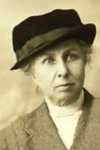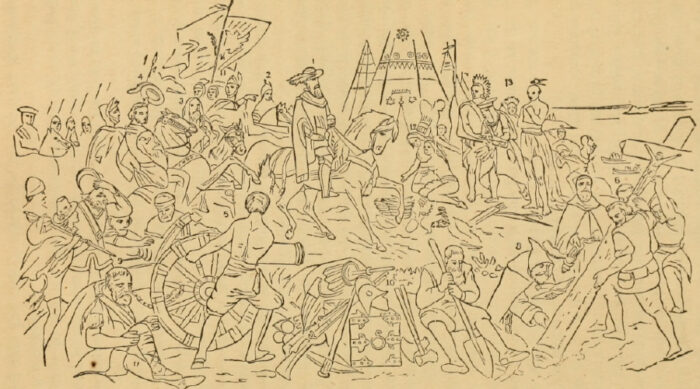
I promised last week to look at the state that the Capitol was in during the 19th century, building on the rather dire description given of it by Charles Dickens in 1842, but realized that I have to put that off for a bit in order to introduce a new character before continuing.
While today a number of congressmembers sleep in their offices – at least a few days a week, when Congress is in session – nobody really lives in the Capitol. There was, however, for many years a man who came quite close to doing this. His story is a strange one, and worth looking at.
Samuel Douglas Wyeth was born in Harrisburg, Pennsylvania on May 16, 1817. Wyeth (who alternated between calling himself “Samuel D.” “S.D.” and “S. Douglas”) moved to Philadelphia to become a printer. In Philadelphia, he met Caroline Churchill Wardwell, who was born in 1824 in Rhode Island. They married and, over the next dozen or so years had seven children (That’s his daugher, Annie Wardwell Wyeth, above). While the family briefly lived in Rhode Island, most of there time was spent in and around Philadelphia, including across the river in Camden, New Jersey.
Some time during the Civil War, Wyeth threw it all in and moved south to Washington, where he first found work in the “stereotyping,” or printing, rooms at the Government Printing Office, a position he held only briefly.
From there, his story becomes decidedly less normal. After first becoming the correspondent for a Philadelphia paper, he began to interest himself in Washington history. He essentially moved into the Capitol, more accurately into the dome thereof, and became “The Man in the Dome.” From his position, he would sell pictures of Washington, and answer questions – even the most esoteric – about history. He was even allowed to stay when the bulk of those who sold items in the Rotunda were removed in 1865. He also wrote a series of books, mainly about the Capitol, but also Roose’s Companion and Guide to Washington and Vicinity, first published in 1876 and continued even after his death. He also became an art collector, and when his collection was auctioned after his death it was described as having “rare oil Paintings, one of which (the Progress of Christianity) is considered of great value; it was painted not later than the 15th century, and there is no doubt that it is from the Titian school.” Furthermore, there were “Engravings […] of a very high character” and “superb specimens in Japanese and other porcelains, silver-plated ware, books, furniture, &c.”

However, his life was far from normal. He lived in a boarding house – apparently while he had made plenty of money from his sales, he spent even more on his art, and thus could not afford normal accommodations. He also never saw his wife again after leaving Pennsylvania, though his children did apparently come to visit him occasionally. When he died in January 1881, there were a number of obituaries of him published all across the country. It was in these that the moniker “The Man in the Dome” were first printed, before that he was known only by those who spent time in the Capitol.
The longest obituary was published in the Philadelphia Record, and republished a number of times. It described him as having “excellent education” and being “naturally bright, of retentive memory and an inquiring turn of mind.”
He was buried in Chambersburg, Pennsylvania, 45 miles southwest of his birthplace. His wife would outlive him by over 25 years, and would be buried in Orange, New Jersey.
